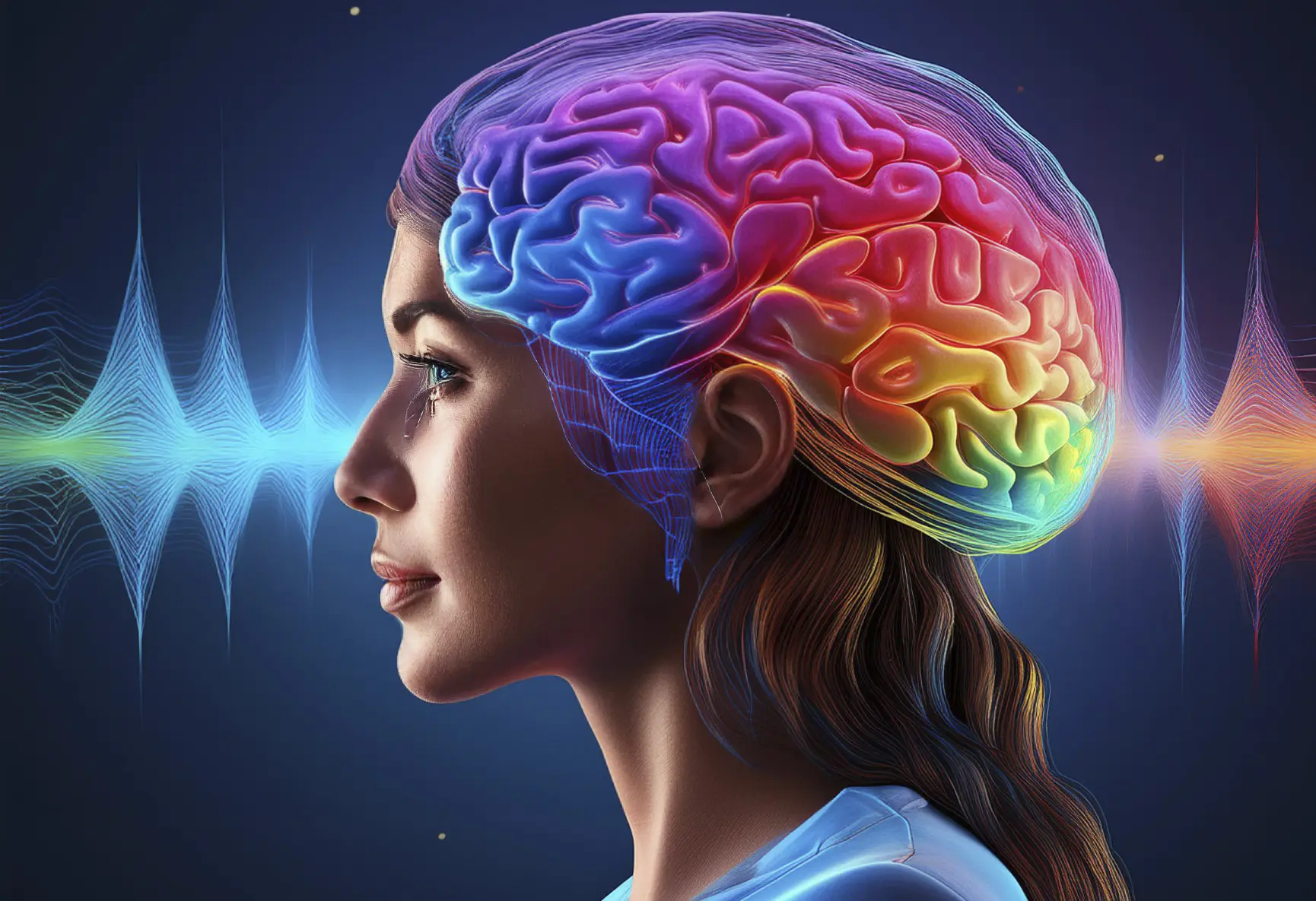By Phillip Tanzilo, CPTD, MHRM
During my time working with John Assaraf, a renowned behavioral neuroscience researcher, I developed a deep fascination with the power of the human brain. This led me to explore organizations like the Centerpointe Research Institute, where I discovered the incredible potential of brainwave entrainment. Through my research, I found that this technique can significantly boost creativity, learning, memory, resilience, and focus while reducing stress, impulsiveness, and mental fog.
I’ve always been amazed by entrainment – it’s this incredible process where things start to sync up when they’re near each other. Back in 1665, a Dutch scientist named Christiaan Huygens noticed this happening with pendulum clocks. Since then, we’ve found it happens all over nature – even in our brains!

Story of the Clocks
Imagine you have two grandfather clocks side by side. Each clock has a pendulum swinging back and forth. At first, these pendulums might swing at different times – one might be swinging left while the other is swinging right. But something interesting happens if you leave them next to each other for a while.
Huygens noticed that after some time, these pendulums would start swinging together, perfectly in sync. It’s as if they were “talking” to each other and decided to move as one. This is what we call entrainment.
The Moral
Now, here’s the cool part: this doesn’t just happen with clocks. We see it all around us in nature. Think about fireflies blinking in unison on a summer night, or how a group of people walking together often fall into the same rhythm without realizing it.
Our brains work in a similar way. They have their own rhythms, which we call brainwaves. Just like the pendulums, our brainwaves can sync with rhythms around us. This could be the beat of music, the pattern of a flashing light, or even the rhythm of someone else’s speech.
Applications of Brainwave Entrainment
This ability of our brains to ‘tune in’ to external rhythms is what allows us to use techniques like brainwave entrainment to improve focus, reduce stress, or enhance learning. It’s as if we’re helping our brains find a better rhythm to work with, just like those pendulum clocks finding their shared swing.
I’ve applied the concept of entrainment to enhance both individual and team performance in my work facilitating workplace learning and problem-solving experiences. For individuals, I’ve found that techniques like listening to rhythmic music can improve focus and productivity, while rhythmic breathing exercises can reduce stress. For teams, I use activities like synchronized movements to build cohesion and structured communication patterns to enhance understanding during meetings.

What really blew my mind was realizing how entrainment isn’t just a workplace thing – it’s everywhere! Retailers and advertisers have long recognized the power of rhythm and synchronization in influencing consumer behavior. According to a study by Milliman (1982), the tempo of background music in stores can affect the pace of customer movement and the volume of purchases. Slow-tempo music tends to slow the pace of shopping, leading to increased sales volume as customers spend more time in the store. Similarly, in commercials, the use of catchy jingles or repetitive visual patterns can create a form of entrainment that makes messages more memorable and persuasive (Brennan & Bahn, 2006).
Enhancing Learning and Skill Assimilation
Always working to improve my strategic approaches to workplace learning and skill-building, I found upon some game-changing techniques that tap into entrainment. These methods not only make learning more effective but also create a more engaging and interactive experience for participants. Once I figured out how our brains naturally fall in step with rhythms around us, it opened a whole new way of creating learning experiences that really stick. Let’s explore some of these innovative approaches:
- Rhythmic Learning Techniques: I’ve found that using rhythmic patterns in learning activities, such as repeating key phrases or concepts to a beat, can help adults retain information more effectively. This method helps synchronize their brainwaves with the learning material, making it easier to remember.
- Interactive Simulations: In my training programs, I incorporate simulations that involve repetitive actions or sequences. For example, I design training modules that require learners to follow a specific sequence of steps rhythmically, helping them internalize the process and perform it more naturally on the job.
- Mindfulness and Meditation Sessions: I always start my training sessions with short mindfulness or meditation exercises that involve rhythmic breathing or listening to calming music. This practice helps learners reduce stress, clear their minds, and be more receptive to new information.
- Gamified Learning: I use games that incorporate rhythmic challenges or tasks. These activities not only make learning more engaging but also help learners develop a sense of timing and coordination that can be applied to real-world tasks.
- Group Exercises: I design group activities that require synchronized actions, such as team problem-solving tasks that need coordinated efforts. This approach not only reinforces the concept of entrainment but also fosters teamwork and collaboration.
Entrainment in Change Management: Riding the Wave of Innovation
When applying the concept of entrainment to change management, there are interesting parallels with the adoption curve popularized by Everett Rogers in his 1962 book “Diffusion of Innovations” (Rogers, 2003). Just as pendulums synchronize over time, different groups within an organization can gradually align with new ideas or processes. Just as pendulums synchronize over time, different groups within an organization can gradually align with new ideas or processes.
Innovators, much like the first pendulum to adjust its swing, set the initial rhythm for change. They’re quick to embrace new ideas and start the ‘entrainment’ process within the organization. Early adopters soon follow, picking up the rhythm and amplifying it. As this ‘change rhythm‘ grows stronger, it begins to influence the early majority, who then help to stabilize the new pattern across the organization.
However, just as some pendulums might resist synchronization due to friction or other factors, late majority adopters and laggards may initially struggle to align with the new organizational rhythm. By understanding this process as a form of organizational entrainment, change leaders can design strategies that gradually draw these groups into the new pattern, perhaps by using the principles of rhythmic learning or group exercises mentioned earlier.
This perspective on change management suggests that successful transitions aren’t just about pushing change through, but about creating resonant ‘rhythms’ that the entire organization can gradually synchronize with over time.

Wrapping Up: My Entrainment Journey and What It Means for You
You know, when I first discovered the concept of brainwave entrainment, I had no idea how deep the rabbit hole went. This journey has been mind-blowing, from boosting my own focus to watching teams sync up like magic. Seeing these principles at work in everything from how we learn to how entire organizations change is like finding the rhythm of life itself.
I’ve seen firsthand how tapping into these natural rhythms can transform a chaotic workplace into a humming, productive environment. It’s not just about productivity, though. It’s about creating spaces where people genuinely connect, and ideas flow freely. Whether you’re trying to master a new skill, lead a team through choppy waters, or navigate a massive organizational shift, understanding entrainment gives you a secret weapon.
Here is my challenge to you: Take these ideas for a spin in your own world. Perhaps start small – try a rhythmic learning technique in your next meeting, presentation, or introduce a synchronized team-building exercise. Pay attention to the rhythms around you, in your team, in your organization. You might just start noticing patterns you’ve never seen before.
Trust me, once you start seeing the world through this lens, you can’t unsee it. And who knows? You might just find yourself riding a whole new wave of success. I encourage you to give it a try. I’ve got a feeling you’ll be as hooked as I am.
References:
- Milliman, R. E. (1982). Using Background Music to Affect the Behavior of Supermarket Shoppers. Journal of Marketing, 46(3), 86-91.
- Brennan, I., & Bahn, K. D. (2006). Literal versus extended symbolic messages and advertising effectiveness: The moderating role of need for cognition. Psychology & Marketing, 23(4), 273-295.
- Rogers, E. M. (2003). Diffusion of Innovations (5th ed.). Free Press.
#Teambuilding, #ProductivityEnhancement, #StressReductionTechniques, #Learninganddevelopment, #CognitivePerformance, #EmployeeEngagement, #BrainwaveEntrainment, #WorkplacePerformance, #LearningEnhancement, #NeuroscienceinBusiness, #TeamProductivity, #CognitiveSynchronization, #MindfulnessAtWork, #RhythmicLearningTechniques, #InteractiveTrainingSimulations, #EmployeeSkillDevelopment, #StressReductioninWorkplace, #GroupSynchronizationExercises, #GamifiedLearning, #RetailConsumerBehavior, #AdvertisingPsychology, #ChangeManagement, #AdoptionCurve



